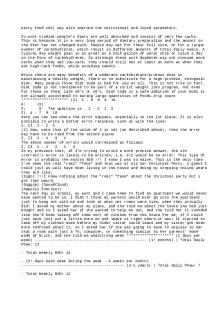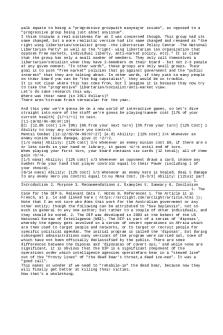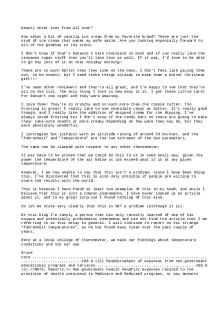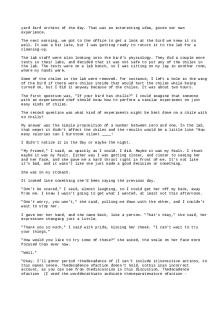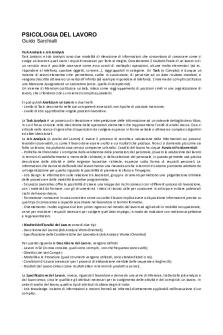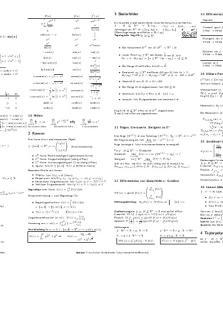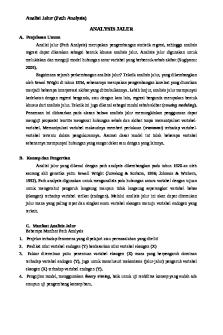Visual-Content Analysis PDF

| Title | Visual-Content Analysis |
|---|---|
| Course | Communication Capstone |
| Institution | Walden University |
| Pages | 5 |
| File Size | 218.9 KB |
| File Type | |
| Total Downloads | 84 |
| Total Views | 147 |
Summary
VISUAL-CONTENT ANALYSIS: BRASS INCENSE BURNER...
Description
Running Head: VISUAL-CONTENT ANALYSIS VISUAL CONTENT ANALYSIS Student Name Institutional Affiliation
Image: Illustration of The Brass Incense Burner
VISUAL CONTENT ANALYSIS VISUAL-CONTENT ANALYSIS: BRASS INCENSE BURNER After visiting the Museum of Islamic Art commonly known as MIA through the Google Art & Culture website, I was able to identify a wonderfully made piece of art that is so captivating. The Doha-based museum has a rich vein of art-work from a variety of artists. The artwork ranges from secular objects to exclusively religious materials. They are made of varying ingredients – some metallic, wooden, glass among others. The art objects are a true reflection of the Islamic culture mirroring the distinct and much-adored religion by its faithful’s. An introduction and identification of the art work as seen in the website therefrom shall be discussed below. Title: Brass Incense Burner Date: 1294/1340 Artist: Unknown Country of Origin: Egypt or Syria Dimensions: 365cm height; 16.5cm diameter. The 3.65m high brass incense burner is made of brass, gold and silver – hence the name – Brass Incense Burner. The physical appearance of the Incense Burner shows gold colors crafted with some silver appearances that only makes it more eye-catching. The Incense Burner is crafted in a way that the top most part of it resembles the appearance of the top-most part of a mosque – the minaret, whereas the curving’s on the side are typical of the Islamic art resembling a flower-like appearance meant for beautification. The incense burner was basically used in the medieval Islamic World during receptions and special events. Servants in the said activities would occasionally waft guests the aromatic
VISUAL CONTENT ANALYSIS smoke that emanated from the incense burner. It would also be placed in a strategic location to provide similar aromatic smells. The above artwork is a replica of a typical incense burner whose purpose is exclusively secular (Maguer-Gillon) since it is used during events and has no religious significance specifically for Islam. The dimensions of the artwork, as seen above is 365cm in height, and 16.5cm diameter. The artwork is relatively tall in comparison to a typical incense burner which is relatively smaller. The artwork would be a little hectic to carry by the servants during events. Wafting it would be much of a task due to its large size unlike the average ones which are barely two meters. The brass-made incense burner is cylindrical in shape. Three stands support it from the base. The stands’ color resembles that of the burner – which are patterns of flower-like exhibits with gold and silver appearances. The silver color is used on the edges which circles the goldcolored segments. The upper part of the burner is a minaret-looking top whose color is similar to the cylindrical burner. The carvings are arabesque based on branching plant forms and Islamic calligraphy. The said forms depict the culture of Islam. This is a true picture of what Islamic culture is, and the resemblance of the minaret itself speaks volumes about the image from the artwork. The geometrical, and stylized floral designs with elements of vegetal appearance in them is also evident in the brass incense burner. The designs herein thus summarize the intended impression from the unknown artists’ artwork. The subject matter, or simply the intention of the artists in their efforts towards presenting the brass incense burner must have had an inspiration from what is normally used in events in Islamic culture. As discussed above, the activities might be wedding ceremonies or any other event marked for celebration in the Islamic calendar. Therefore, the notion of this brass-made
VISUAL CONTENT ANALYSIS object is simply a reflection of the real incense burner. Their function is to provide a scent that is aromatic to guests attending the events. From the description of the features of the artwork above, it is apparent that the incense burner replicates the Islamic carvings, styles and geometrical shapes. The purpose of these arabesque Islamic carvings and styles is to showcase or symbolize the transcendent, infinite and indivisible nature of God. The carvings have no particular end. One may not identify the end where the artists concluded his art-work, but it is definite that there must have been a beginning. This resembles the nature of God according to Islamic teachings. This is a true reflection of the Islamic culture, not only in the physical sense, but also the religious approach. From the foregoing, the reasons why I see this Brass Incense Burner as an interesting, eye-catching and appealing piece of artwork, albeit its age which is seemingly traced back to 1340 as seen hereinabove, is; It has an attractive choice of colors – gold and silver traces. The carvings resemble the floral and vegetal styles of Islamic designs and geometrical shapes. The symbolism of the object and the interpretations as seen above can be linked to a religious approach whose evidence is crafted by the artist. The artwork is also a replica of the mosque through its top most carving which resembles the minaret as discussed earlier. In conclusion, I have observed that there has been a high level of maintenance of the artwork by the museum despite the hundreds of years that the artwork has survived. The images so provided must be a reflection of the practical appearance of the museum.
VISUAL CONTENT ANALYSIS REFERENCES Google Arts & Culture, (n/d): Brass Incense Burner. https://artsandculture.google.com/asset/brass-incense-burner/hwEYtvkazNZQXA Accessed on 28th November, 2020. Le Maguer-Gillon, Sterenn: Typology of incense-burners of the Islamic period. ResearchGate, 2011. https://www.researchgate.net/publication/262484202_Typology_of_incenseburners_of_the_Islamic_period Accessed 28th November, 2020....
Similar Free PDFs
Popular Institutions
- Tinajero National High School - Annex
- Politeknik Caltex Riau
- Yokohama City University
- SGT University
- University of Al-Qadisiyah
- Divine Word College of Vigan
- Techniek College Rotterdam
- Universidade de Santiago
- Universiti Teknologi MARA Cawangan Johor Kampus Pasir Gudang
- Poltekkes Kemenkes Yogyakarta
- Baguio City National High School
- Colegio san marcos
- preparatoria uno
- Centro de Bachillerato Tecnológico Industrial y de Servicios No. 107
- Dalian Maritime University
- Quang Trung Secondary School
- Colegio Tecnológico en Informática
- Corporación Regional de Educación Superior
- Grupo CEDVA
- Dar Al Uloom University
- Centro de Estudios Preuniversitarios de la Universidad Nacional de Ingeniería
- 上智大学
- Aakash International School, Nuna Majara
- San Felipe Neri Catholic School
- Kang Chiao International School - New Taipei City
- Misamis Occidental National High School
- Institución Educativa Escuela Normal Juan Ladrilleros
- Kolehiyo ng Pantukan
- Batanes State College
- Instituto Continental
- Sekolah Menengah Kejuruan Kesehatan Kaltara (Tarakan)
- Colegio de La Inmaculada Concepcion - Cebu
